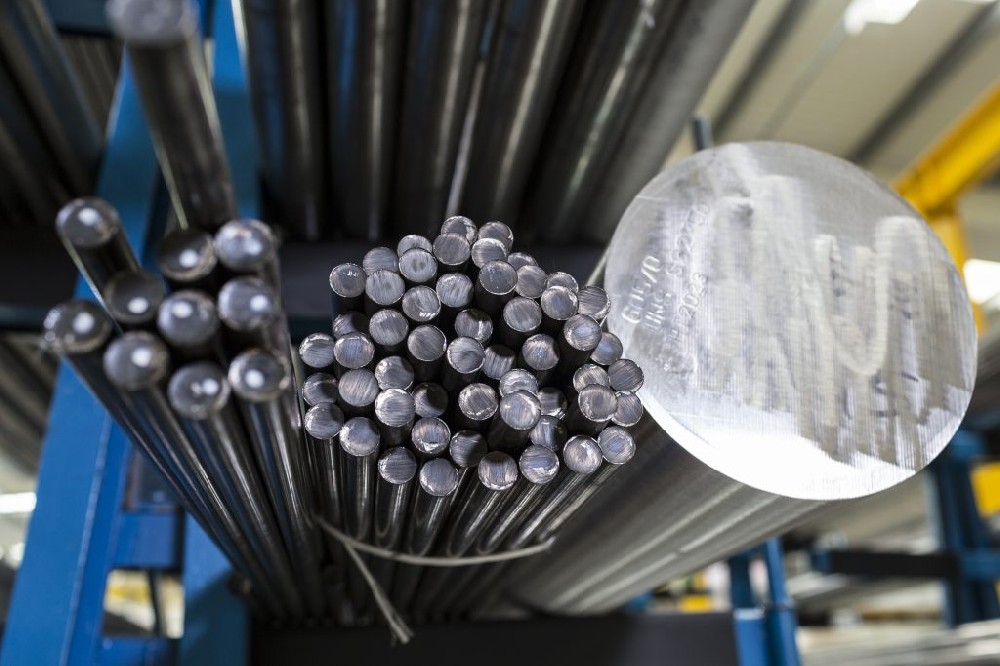Inconel718 Alloy
Basic Information
Name: Inconel718, also known as Alloy 718
Similar grades: GH4169, GH169 (China); NC19FeNb (France); NiCr19Fe19Nb5, Mo3 (Germany); NA51 (UK); UNS NO7718 (USA); NiCr19Nb5Mo3 (ISO)¹.
Chemical Composition
Nickel (Ni): 50%-55% content. As the matrix of the alloy, it endows the alloy with excellent high-temperature toughness and anti-oxidation base performance.
Chromium (Cr): 17%-21% content. It can form a dense chromium oxide protective layer on the surface, enhancing high-temperature oxidation resistance.
Iron (Fe): The balance, used to balance material cost and comprehensive performance.
Niobium (Nb): 4.75%-5.5% content. It forms a γ'' strengthening phase with titanium, significantly improving strength through the age hardening mechanism.
Molybdenum (Mo): 2.8%-3.3% content, which can optimize creep resistance and erosion resistance to corrosive media.
Other elements: Trace elements such as aluminum (Al, 0.2%-0.8%) and titanium (Ti, 0.65%-1.15%) further improve performance by refining grains or strengthening phase structures.
Physical Properties
Density: 8.24g/cm³¹.
Melting temperature range: 1260-1320℃¹.
Coefficient of thermal expansion: In the range from room temperature to 1000℃, the average coefficient of thermal expansion is approximately 13.3×10⁻⁶/℃.
Thermal conductivity: At room temperature, the thermal conductivity is about 11.4W/(m·K), and it increases with rising temperature.
Mechanical Properties
High strength: At room temperature, the tensile strength can reach 1370MPa, and the yield strength is 1030MPa; in a high-temperature environment of 650℃, the tensile strength can still be maintained at 1100MPa, with the yield strength remaining at 890MPa⁸.
Good toughness: The elongation at room temperature is 12%, and it can increase to 15% at high temperatures. It has good impact resistance and can withstand a certain degree of deformation without breaking⁸.
Fatigue resistance: It can effectively resist the formation and propagation of cracks under long-term alternating loads, making it suitable for components bearing cyclic stress⁷.
Creep resistance: It has excellent creep resistance under high-temperature and high-stress conditions, maintaining stable size and shape for a long time.
Processing and Heat Treatment
Processing performance: It has good processability and can be formed by various methods such as forging, rolling, and mechanical processing. However, attention should be paid to work hardening characteristics during processing, and appropriate processing techniques and tools should be adopted to ensure processing quality⁴⁸.
Heat treatment: It usually includes two steps: solution treatment and precipitation hardening (aging) treatment. Solution treatment enables the alloy to obtain a uniform austenitic structure, improving processability; precipitation hardening treatment, through heating and heat preservation, causes strengthening phases to precipitate in the alloy, thereby increasing hardness and strength⁴.
Corrosion Resistance
Resistance to pitting and crevice corrosion: It has high resistance to corrosive media containing chloride ions, effectively preventing pitting and crevice corrosion⁴.
Resistance to stress corrosion cracking: Under the combined action of tensile stress and corrosive media, it has good resistance to stress corrosion cracking and is not prone to cracking⁴.
Oxidation resistance: The high chromium content can form a dense oxide film, which effectively prevents further erosion by oxygen and corrosive substances, performing excellently in high-temperature oxidation environments⁷.
Application Fields
Aerospace field: Used in manufacturing key components such as turbine disks, blades, and fasteners for aero-engines, as well as structural parts and engine components of aerospace vehicles⁴.
Energy industry: Can be used to manufacture components in steam turbines, liquid fuel rockets, cryogenic engineering, and nuclear engineering, such as structural parts, pipelines, and valves of nuclear reactors¹⁴.
Chemical industry: Used in manufacturing chemical processing equipment, pressure vessels, pollution control systems, etc., which can work stably in corrosive chemical media and high-temperature environments⁴.
Marine engineering field: Suitable for manufacturing structural parts, pipelines, valves, and pumps of offshore platforms, capable of resisting seawater corrosion and harsh conditions in marine environments.
Medical device field: Due to its good biocompatibility and corrosion resistance, it can be used in manufacturing medical devices and implants, such as artificial joints and dental implants.


